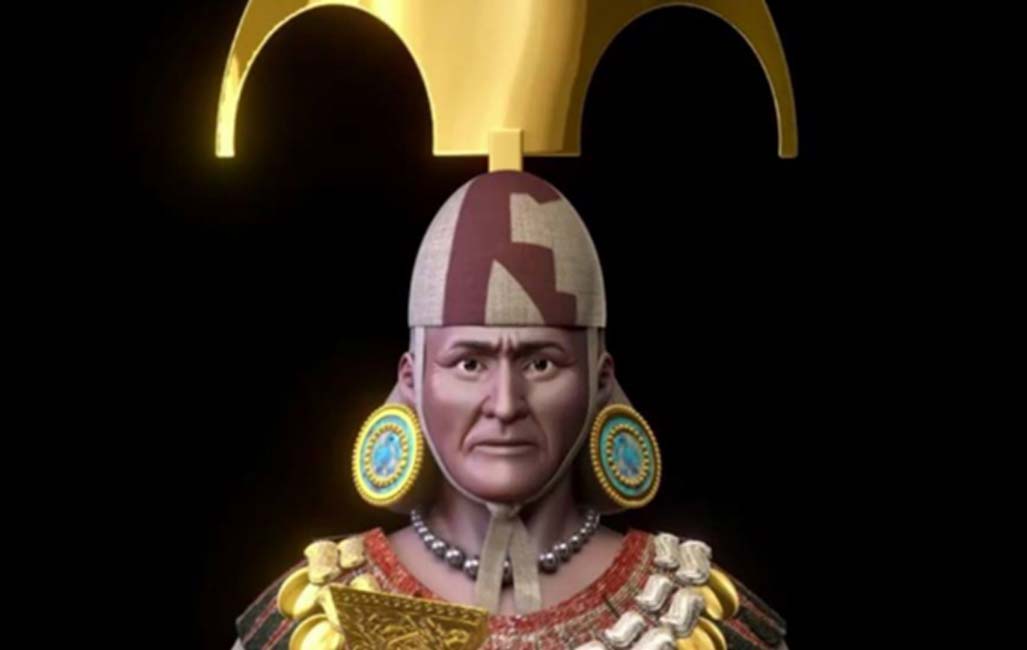Lord of Sipan: First Time Real Face of 2,000-Year-Old Mochican Priest Revealed
The face of a powerful ruler of the ancient Moche civilization of Peru, known as El Señor de Sipán (The Lord of Sipán), has been revealed for the first time following an intensive project to digitally reconstruct his face with the help of forensic anthropology experts. The 2,000-year-old remains of the Lord of Sipán were discovered in 1987 in the tomb complex of Huaca Rajada, buried among dazzling treasures, unlike any seen before in the region.
An analysis of his regalia and iconographic depictions found in his tomb, suggests that this man was a high ranking Moche warrior-priest and a pre-eminent ruler of the Lambayeque valley. This mighty noble was probably viewed by his people as having god-like powers.
The Moche were a pre-Incan civilization who ruled the northern coast of Peru approximately two thousand years ago. They built huge pyramids made of millions of mud bricks and created an extensive network of aqueducts which enabled them to irrigate crops in their dry desert location. They were also pioneers of metal working techniques like gilding and soldering, which enabled them to created extraordinarily intricate jewellery and artifacts.
Little was known about the Moche civilization because they left no written texts to help explain their beliefs and customs. However, the discovery of detailed paintings and murals on pottery work and on temple walls, as well elaborate tombs such as those found at Huaca Rajada, have helped to provide insights into their culture and beliefs. A reconstruction of the Huaca Rajada tomb complex can be seen below.
Andina news service reported that high-tech analysis enabled researchers to determine that the Mochican ruler was aged between 45 to 55 years when he died, and was 1.67 meters tall.
Cicero Moraes, a 3D computer graphics designer, worked alongside forensic dentist De Paulo Miamoto, who conducted an anthropological analysis of the ruler’s ancestry in order to assist in piecing together his facial features.
“He has the typical features of pre-Columbian ancestry and looks like the original South American indigenous Indians that lived here hundreds of years ago,” Dr Miamoto told Mail Online.
The task to reconstruct the face of The Lord of Sipán was extremely challenging as his skull was broken into 96 fragments, crushed by pressure from sediments, and had laid in soil for more than 2,000 years. However, each piece was meticulously reassembled and glued together. Cicero Moraes then took nearly 100 photographs to digitally map the skull. A video of the reconstruction process can be seen below.
When The Lord of Sipán was discovered, he was found adorned in gold, silver, and copper jewellery and ornaments, including an enormous crescent headdress with a plume of feathers, a face mask, several pectorals composed of hundreds of shell beads, necklaces, nose rings, ear rings, a gold and silver sceptre, banners of gilded metal sewn onto cotton cloth, and two backflaps, which are trapezoidal sheets of beaten gold that warriors wore attached to the back of their costumes.
The necklaces were made with beads of gold and silver in the shape of maní (peanuts), an important food staple for the Moche. There were ten kernels on the right side made of gold, signifying masculinity and the sun god, and ten kernels on the left side made of silver, to represent femininity and the moon god.
Also buried with the Lord of Sipán were many ceremonial utensils such as tropical sea shells, silver and gold rattles, knives, golden death-masks, gold bells showing a deity severing human heads, three other headdresses, and hundreds of beads. A total of 451 gold, silver, copper, textile, and feather objects were buried with the Lord of Sipán to accompany him in the afterlife.

A reconstruction showing the items the Lord of Sipan was wearing, along with his entourage. Credit: Katrina Oliver
Buried with the warrior priest were six other people: three young women dressed in ceremonial clothes placed at the head and foot of his coffin (possibly wives or concubines who had apparently died some time earlier), two robust males with amputated feet on the long sides (possibly warriors who were sacrificed to accompany their lord), and a child of about nine or ten years of age, placed at the head of his coffin. The remains of a third male were later found on the roof of the burial chamber sitting in a niche overlooking the chamber. There was also a dog, which may have been the Lord of Sipan's favorite pet, and two llamas, which were probably offerings.

The tomb of the Lord of Sipán (public domain)
Dr Walter Alva, Director at the Royal Tombs of Sipán Museum, told Mail Online that “the reconstruction of the features of the Lord of Sipán and the forensic anthropological analysis has allowed us to get closer to the face of our ancestors.”
“It has also been an important step in humanising and understanding more about the Moche Lord of Sipán.”
Top image: The digitally reconstructed face of the Lord of Sipán (ANDINA/Difusion)



















